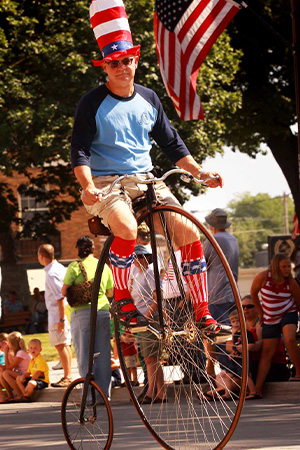FROM THE EXPERT | The secret to a longer, lasting life

There is an old saying, “If I had known I was going to live this long I would have taken better care of myself.” Life is short and we are only guaranteed one day at a time. Exercise is one factor we can control that can increase the number and quality of those days.
Exercise is physical activity that is planned, structured, repetitive and purposefully focused on improvement. Almost anyone can take up walking or light exercise, but if you have a chronic or unstable health condition such as heart disease, diabetes, respiratory problems or a neurologic condition, consult your health care provider before you begin.
An overall program will include cardiovascular exercise, strength training and flexibility. This will allow for graduated increases in activity and decrease the risk of injury. I encourage you to write down your planned program as it can help you stay on track. If you are tech oriented, consider purchasing a fitness tracker to count calories burned, steps taken, distance covered, heart rate and even sleep quality.
During exercise, wear comfortable, loose-fitting clothing to move freely. Select lightweight attire in warm weather to release body heat and layer up in cooler weather.
Replace your shoes every 300 to 500 miles or every six months, whichever comes first. You should be able to “wiggle” your toes and have a “thumb” distance between your longest toe and the end of the shoe box. No two feet are alike, and the correct shoes are an investment for injury prevention.
Remember to warm up. This prepares you for a workout, even before stretching, as you increase your heart rate and blood flow and loosens up muscles, ligaments, tendons and joints.
Many people forgo stretching before exercising, yet it is important to a good experience. Stretching can lead to better flexibility, an increased range of motion and decreased soreness and should be done daily if you’re working out or not.
After exercise or a workout, take time to cool down. This is the process of reducing heart and breathing rates, gradually cooling down body temperature, returning muscles to their optimum length and tension and preventing blood from pooling in the lower extremities. Build an extra 10 minutes into your schedule for the cool down by slower exercise, deep breathing, stretching and refueling/re-hydrating.
Contrary to popular thought, sweating is not an indicator of a good workout or fitness. One exercise target is achieving a heart rate of 50-70% of your maximum heart rate. To calculate your maximum heart rate, subtract your age from 220.
If you’re a social person, join a class, find a personal trainer or walk or work out with a buddy. If you prefer solo time, watch a video or incorporate exercise with daily activity such as mowing the lawn, parking a longer distance from the store, walking the dog or doing chores. Little increments can be useful such as taking the stairs instead of an elevator.
Cross training mixes up your exercise routine using different muscle groups, improves agility and balance and maintains motivation. It also limits the stress on any specific muscle group or joints to limit overuse injuries by working some areas while resting others.
Overuse injuries can occur when a muscle group is worked too long or at too high of an intensity. Improper technique is also a factor in overuse injuries. Most are preventable by using proper form and gear, pacing yourself and listening to your body.
What can you gain from exercise? The list is long and includes improved brain function and memory, protection from chronic disease, aid in weight management, lowered blood pressure, improved sleep, increased energy, reduced anxiety and depression, improved joint pain and muscle strength and increased life span.
If you’re intimidated by a full-blown exercise program, consider this: Walking one hour a week at a moderate pace can reduce your risk of death by 18% and a moderate pace of walking for a recommended 150 minutes a week decreases the risk by 31%. And it’s free, so get moving on a path to a healthier lifestyle.
